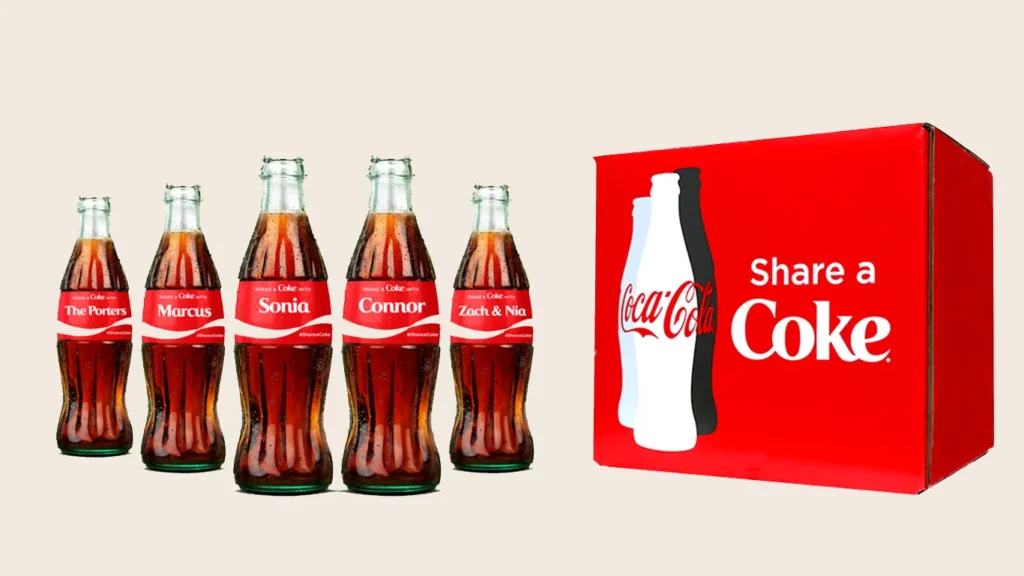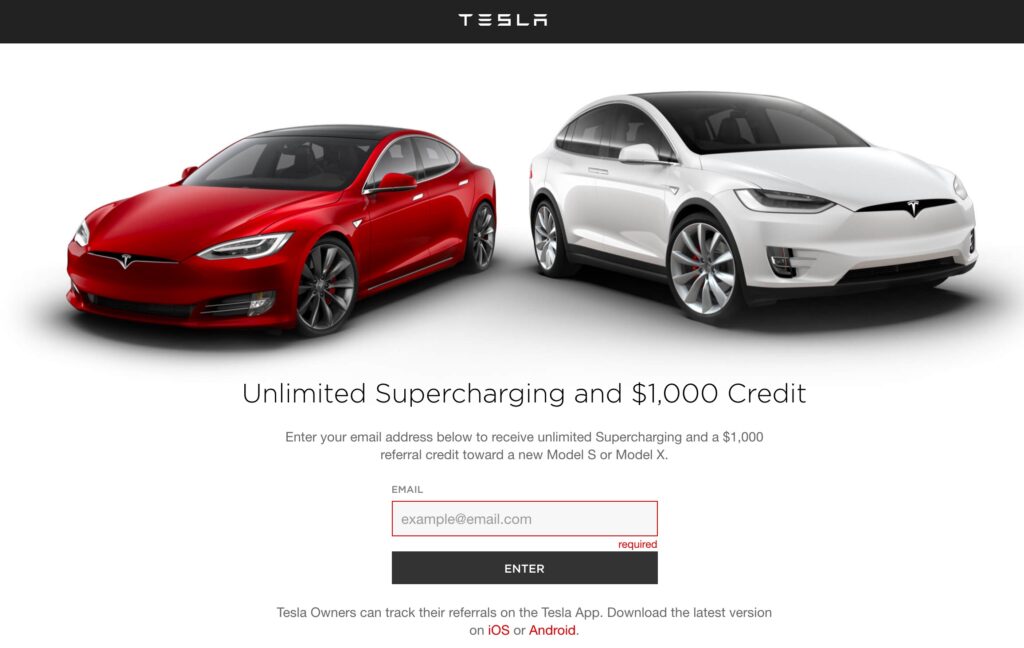In today’s digital landscape, the significance of word of mouth marketing has skyrocketed. With social media at the forefront, brands have a unique opportunity to harness the power of personal recommendations. Consumers increasingly rely on their peers’ opinions and experiences before making purchasing decisions. This trend underscores the importance of cultivating customer advocacy, which can significantly enhance brand visibility and credibility.
Moreover, satisfied customers serve as powerful advocates for brands. When they share their positive experiences, they not only influence their immediate networks but also contribute to a broader conversation about the brand. This organic promotion builds trust and fosters a sense of community among consumers. As a result, businesses must focus on creating exceptional customer experiences that encourage individuals to share their stories.
To maximize the impact of word of mouth marketing, brands should explore various strategies. Engaging with influencers can amplify brand messages, while memorable customer experiences can lead to enthusiastic endorsements. Additionally, leveraging social media platforms allows brands to reach wider audiences quickly and effectively. By understanding these dynamics, companies can develop effective tactics that encourage customer advocacy and drive growth.
Ultimately, embracing word of mouth marketing is essential for brands looking to thrive in the digital age. By fostering authentic relationships with customers and encouraging them to share their experiences, businesses can unlock the full potential of this powerful marketing tool. In doing so, they can enhance their reputation and cultivate a loyal customer base that actively promotes their brand.
What is Word of Mouth Marketing?
Word of mouth marketing (WOMM) is a promotional strategy that encourages customers to share their positive experiences with a product or service. This approach leads to organic discussions and recommendations among consumers. Essentially, WOMM thrives on the trust that people place in personal recommendations, which often outweighs the influence of traditional advertising methods. Research indicates that 83% of consumers trust recommendations from friends and family, highlighting the effectiveness of this marketing strategy.
Moreover, WOMM acts as a form of free advertising generated by satisfied customers. When individuals talk about their experiences, they create a buzz that can significantly impact brand perception. Companies can foster this type of marketing by exceeding customer expectations and delivering exceptional service. By doing so, they not only encourage word-of-mouth conversations but also enhance their overall reputation.
Additionally, businesses can utilize various techniques to promote WOMM. These include creating shareable content, implementing referral programs, and engaging with influencers. Each of these strategies aims to facilitate conversations about the brand, ultimately leading to increased visibility and sales. As consumers share their positive experiences online and offline, the ripple effect can drive new customers to the brand.
Word of mouth marketing is a powerful tool for brands looking to grow organically. By understanding its dynamics and implementing effective strategies, companies can harness the power of customer advocacy. This approach not only builds trust but also fosters long-term relationships with customers, making it an essential component of any successful marketing strategy.
The Power of Customer Advocacy
Customer advocacy plays a crucial role in transforming satisfied customers into enthusiastic brand ambassadors. When customers feel valued and appreciated, they are more inclined to share their positive experiences with others. This kind of advocacy not only enhances brand visibility but also fosters loyalty among existing customers. As a result, businesses can benefit from a network of advocates who actively promote their products and services.
Moreover, brands like Dropbox have effectively utilized customer referrals to expand their user base. By incentivizing users with additional storage for every friend they refer, Dropbox has successfully encouraged satisfied customers to advocate for the brand. This strategy demonstrates how leveraging customer advocacy can lead to significant growth and increased market share. When customers are motivated to share their experiences, they create a ripple effect that attracts new users.
In addition to boosting visibility, customer advocacy strengthens relationships between brands and their customers. Advocates tend to remain loyal and engaged, leading to higher retention rates. Furthermore, these advocates often provide valuable feedback that helps businesses improve their offerings. By listening to their advocates, companies can better understand customer needs and preferences, ultimately enhancing the overall customer experience.
Harnessing the power of customer advocacy is essential for brands seeking sustainable growth. By creating an environment where customers feel appreciated and valued, businesses can encourage word-of-mouth promotion. This organic marketing strategy not only builds trust and credibility but also cultivates a loyal customer base that actively supports the brand.
Types of Customer Advocacy
Referral Programs
Referral programs are an effective way to encourage customers to recommend your brand to their friends and family. By offering rewards, such as discounts or freebies, businesses can motivate satisfied customers to share their positive experiences. This strategy not only increases brand visibility but also drives new customer acquisition through trusted recommendations.
Moreover, referral programs create a win-win situation for both the brand and its advocates. Customers feel appreciated when they receive rewards for their referrals. In turn, brands benefit from increased sales and a growing customer base. By implementing a well-structured referral program, companies can harness the power of customer advocacy to fuel their growth.
Social Media Engagement
Social media engagement is another vital aspect of customer advocacy. By creating shareable content, brands can encourage customers to post about their experiences online. This type of engagement not only amplifies brand visibility but also fosters a sense of community among users. When customers share their stories, they contribute to authentic conversations that can influence potential buyers.
Furthermore, social media platforms provide an excellent opportunity for brands to interact with their audience. Responding to comments and messages helps build trust and strengthens relationships with customers. By actively engaging on social media, businesses can turn satisfied customers into advocates who willingly promote the brand within their networks.
Influencer Partnerships
Collaborating with influencers is an increasingly popular method for fostering customer advocacy. Influencers have established credibility within their niches, making them effective promoters of brands. By partnering with influencers who align with your brand values, you can reach a wider audience and enhance your brand’s reputation.
Additionally, influencer partnerships allow for authentic promotion. When influencers share their genuine experiences with a product or service, their followers are more likely to trust their recommendations. This authenticity can lead to increased engagement and conversions, as potential customers feel more connected to the brand through relatable endorsements.
Customer Testimonials
Customer testimonials are powerful tools for showcasing positive experiences and building trust. Sharing reviews on various platforms helps potential customers see the value of your products or services. When satisfied customers express their appreciation publicly, it creates social proof that can influence others’ purchasing decisions.
Moreover, featuring testimonials on your website and marketing materials enhances credibility. Prospective buyers are more likely to trust a brand that showcases real experiences from existing customers. By actively collecting and promoting customer testimonials, businesses can leverage this form of advocacy to strengthen their reputation and attract new clients.
Benefits of Word of Mouth Marketing
Cost-Effective
One of the primary advantages of word of mouth marketing (WOMM) is its cost-effectiveness. Unlike traditional advertising methods, WOMM often requires minimal financial investment. Brands can leverage the enthusiasm of satisfied customers to promote their products without spending heavily on ads.
Moreover, WOMM relies on organic conversations rather than paid placements. This means that businesses can achieve significant reach without the high costs associated with traditional marketing campaigns. By encouraging customers to share their experiences, brands can create a powerful marketing force that operates on a grassroots level.
Additionally, WOMM can lead to a higher return on investment (ROI). When customers advocate for a brand, they often do so out of genuine satisfaction. This authenticity resonates with potential buyers, making them more likely to convert. As a result, WOMM can deliver impressive results while keeping marketing budgets in check.
Increased Trust
Another key benefit of word of mouth marketing is the increased trust it generates. Recommendations from friends and family are perceived as more credible than paid advertisements. Consumers tend to value personal endorsements over promotional messages, which enhances the effectiveness of WOMM.
Furthermore, trust plays a crucial role in the buying decision process. When potential customers hear positive feedback from their peers, they are more likely to consider the brand seriously. This trust factor can significantly influence their purchasing behavior, leading to higher conversion rates for businesses that effectively utilize WOMM.
Additionally, building trust through WOMM fosters long-term relationships with customers. When individuals feel confident in a brand due to positive recommendations, they are more likely to become repeat buyers. This loyalty not only boosts sales but also encourages further advocacy as satisfied customers share their experiences with others.
Enhanced Brand Loyalty
Word of mouth marketing also contributes to enhanced brand loyalty. Satisfied customers who have positive experiences are more likely to return for future purchases. This loyalty is often rooted in the emotional connection that customers develop with a brand after receiving exceptional service or products.
Moreover, loyal customers tend to advocate for brands within their social circles. They are more inclined to recommend your products or services to friends and family. This organic promotion helps create a community of advocates who actively support the brand and contribute to its growth.
Additionally, fostering brand loyalty through WOMM can lead to increased customer lifetime value (CLV). Loyal customers not only make repeat purchases but also tend to spend more over time. By focusing on building strong relationships with customers and encouraging word-of-mouth promotion, brands can secure a loyal customer base that drives long-term success.
Tools and Techniques for Encouraging Customer Advocacy
Create Memorable Experiences
Creating memorable experiences is essential for encouraging customer advocacy. When customers have positive interactions with your brand, they are more likely to share their experiences with others. This can be achieved through exceptional customer service, personalized communication, and attention to detail. By ensuring that every touchpoint is enjoyable, brands can foster a strong emotional connection with their customers.
Moreover, memorable experiences can lead to lasting impressions. For instance, brands can surprise customers with unexpected perks or personalized gestures. Such actions not only delight customers but also motivate them to advocate for the brand. When customers feel valued and appreciated, they become more inclined to recommend the brand to friends and family.
Additionally, businesses should continuously seek feedback on customer experiences. By understanding what resonates with customers, brands can refine their approach and enhance future interactions. This commitment to improvement demonstrates that the brand values its customers’ opinions, further strengthening the relationship and encouraging advocacy.
Engage on Social Media
Engaging on social media is another effective technique for promoting customer advocacy. Platforms like Instagram and Facebook provide excellent opportunities for brands to connect with their audience. By actively interacting with customers through comments, messages, and posts, brands can create a sense of community around their products or services.
Furthermore, encouraging customers to share their stories on social media amplifies the brand’s reach. When satisfied customers post about their experiences, it generates authentic conversations that can attract new potential buyers. Brands can facilitate this by creating shareable content or hosting contests that incentivize customers to post about their interactions.
Additionally, monitoring social media discussions allows brands to identify advocates and address any concerns promptly. Responding to both positive and negative feedback demonstrates that the brand values its customers’ input. This level of engagement not only builds trust but also encourages advocates to share their experiences more frequently.
Leverage User-Generated Content
Leveraging user-generated content (UGC) is a powerful way to encourage customer advocacy. By motivating customers to create content related to the brand, businesses can harness authentic endorsements that resonate with potential buyers. UGC can take many forms, including reviews, photos, videos, and social media posts showcasing the product in use.
Moreover, showcasing UGC on official channels enhances credibility. When potential customers see real people enjoying a product or service, they are more likely to trust the brand. This form of social proof can significantly influence purchasing decisions and drive sales.
Additionally, brands can incentivize UGC by running campaigns or contests that encourage customers to share their content. Offering rewards or recognition for the best submissions creates excitement and motivates participation. By fostering a culture of sharing among customers, brands can amplify their message and strengthen advocacy efforts across various platforms.
Creating a Customer Advocacy Program
Identifying Advocates
Identifying potential advocates is a crucial first step in developing a customer advocacy program. Brands can utilize surveys and social media monitoring tools to pinpoint enthusiastic customers. By analyzing customer interactions and feedback, businesses can discover those who are most likely to promote their products or services.
Moreover, tracking metrics such as purchase frequency and engagement levels can help identify loyal customers. These individuals often have high satisfaction scores and are eager to share their positive experiences. By focusing on these advocates, brands can build a strong foundation for their advocacy efforts.
Additionally, creating customer personas can enhance the identification process. Understanding the motivations and preferences of potential advocates allows brands to tailor their strategies effectively. This targeted approach ensures that the right customers are engaged, maximizing the impact of the advocacy program.
Providing Incentives
Providing incentives is essential for motivating advocates to refer new customers. Brands can offer rewards such as discounts, exclusive access, or recognition for those who actively promote the brand. These incentives not only encourage referrals but also demonstrate appreciation for the advocates’ efforts.
Furthermore, recognizing advocates publicly can strengthen their connection to the brand. Highlighting their contributions through social media shout-outs or featuring them in newsletters fosters a sense of belonging. When advocates feel valued, they are more likely to continue promoting the brand enthusiastically.
Additionally, creating tiered reward systems can enhance engagement. By offering different levels of rewards based on advocacy efforts, brands can encourage more participation. This approach not only incentivizes initial referrals but also motivates ongoing advocacy over time.
Regular Engagement
Regular engagement is vital for maintaining strong relationships with customer advocates. Brands should keep advocates informed through newsletters and updates about new products or services. This consistent communication helps advocates feel connected and valued within the brand community.
Moreover, hosting exclusive events for advocates can further enhance engagement. These events provide opportunities for advocates to connect with each other and share their experiences. Additionally, sneak peeks at new products create excitement and involvement among advocates, encouraging them to spread the word.
Furthermore, soliciting feedback from advocates demonstrates that their opinions matter. By actively listening to their suggestions and concerns, brands can refine their offerings and strengthen relationships. This level of engagement ensures that advocates remain invested in the brand’s success while fostering a loyal community of supporters.
Measuring the Impact of Word of Mouth Marketing
Referral Rates
Monitoring referral rates is a fundamental way to measure the effectiveness of word of mouth marketing (WOMM). By tracking how many new customers come from referrals, brands can assess the impact of their advocacy efforts. This metric provides direct insight into how well advocates are promoting the brand within their networks.
Furthermore, businesses can analyze referral sources to identify which channels are most effective. For instance, tracking referrals from social media versus email can reveal where advocacy is strongest. This information allows brands to allocate resources effectively and enhance their WOMM strategies based on successful channels.
Additionally, implementing unique referral codes or links can streamline tracking efforts. By providing advocates with personalized identifiers, brands can easily monitor the success of individual advocates. This approach not only helps in measuring referral rates but also encourages advocates to engage more actively in promoting the brand.
Customer Lifetime Value (CLV)
Customer lifetime value (CLV) is another critical metric for evaluating the impact of WOMM. Analyzing how much revenue advocates generate over time compared to non-advocates provides valuable insights into customer loyalty. This metric helps brands understand the long-term benefits of cultivating customer advocacy.
Moreover, CLV allows businesses to justify investments in WOMM initiatives. If advocates contribute significantly more revenue than average customers, it highlights the importance of nurturing these relationships. Brands can then focus on strategies that enhance customer satisfaction and encourage repeat purchases among advocates.
Additionally, calculating CLV involves considering factors such as purchase frequency and average order value. By understanding these dynamics, brands can tailor their marketing efforts to maximize revenue from their most loyal customers. This targeted approach ensures that advocacy efforts yield substantial returns over time.
Social Media Mentions
Tracking social media mentions is essential for assessing the reach and impact of word of mouth marketing. By monitoring how often a brand is mentioned across various platforms, businesses can gauge public perception and engagement levels. This metric provides insight into how effectively customers are discussing the brand online.
Furthermore, analyzing sentiment around social media mentions can reveal how customers feel about the brand. Positive mentions indicate strong advocacy, while negative comments may highlight areas for improvement. By understanding these sentiments, brands can adjust their strategies to enhance customer experiences and address concerns proactively.
Additionally, utilizing social listening tools can streamline the process of tracking mentions. These tools enable brands to monitor conversations in real-time and respond promptly to customer feedback. Engaging with customers on social media not only strengthens relationships but also encourages further advocacy as satisfied customers share their experiences with others.
Case Studies of Successful Word of Mouth Marketing Campaigns
Dropbox
Dropbox’s referral program is a prime example of successful word of mouth marketing. Launched in 2010, this program incentivized existing users to refer friends by offering additional storage space. For every successful referral, both the referrer and the new user received 500 MB of free storage, up to a total of 16 GB. This double-sided incentive created a viral loop, motivating users to share Dropbox with their networks.
As a result, Dropbox experienced staggering growth. In just 15 months, the company increased its user base from 100,000 to 4 million, achieving an incredible 3900% growth rate. This success was largely due to the seamless integration of the referral program into the onboarding process. New users were prompted to share Dropbox immediately after signing up, capitalizing on their excitement and engagement.
Moreover, Dropbox continuously refined its referral strategy through experimentation. The team monitored various elements, such as messaging and user experience, to optimize results. By making the referral process easy and transparent, Dropbox encouraged high participation rates. This case study illustrates how a well-executed referral program can drive significant growth through customer advocacy.

Coca-Cola’s Share-a-Coke Campaign
Coca-Cola’s Share-a-Coke campaign is another exemplary case of effective word of mouth marketing. Launched in 2011, this campaign involved personalizing Coke bottles with popular names. The idea was simple yet powerful: consumers were encouraged to find bottles with their names or the names of friends and family. This personalization sparked excitement and encouraged sharing on social media platforms.
The campaign generated immense buzz as consumers began posting photos of their personalized bottles online. This user-generated content amplified the campaign’s reach and visibility. As a result, Coca-Cola saw a significant increase in sales and brand engagement during the campaign period. The emotional connection created by seeing one’s name on a bottle resonated deeply with consumers.
Additionally, Coca-Cola leveraged social media to further enhance engagement. The company encouraged users to share their experiences using hashtags like #ShareACoke. This strategy not only fostered community but also allowed Coca-Cola to track conversations around the campaign. Ultimately, the Share-a-Coke campaign demonstrated how personalization and social sharing can effectively drive word of mouth marketing.

Tesla’s Referral Program
Tesla’s referral program is a notable example of leveraging customer advocacy for growth. The program incentivizes existing Tesla owners to refer new buyers by offering rewards such as free supercharging miles or discounts on future purchases. This approach not only encourages current owners to promote Tesla but also enhances their loyalty to the brand.
By creating enticing rewards for referrals, Tesla taps into its passionate customer base. Many Tesla owners are enthusiastic advocates who genuinely believe in the brand’s mission and products. When they refer friends or family members, they do so with conviction, which adds authenticity to their recommendations.
Moreover, Tesla’s referral program has led to substantial growth in its customer base. As satisfied customers share their positive experiences, potential buyers are more likely to consider purchasing a Tesla vehicle. This organic promotion has proven effective in expanding Tesla’s reach without relying heavily on traditional advertising methods. In summary, Tesla’s referral program exemplifies how brands can effectively harness customer advocacy for sustained growth and brand loyalty.

Overcoming Challenges in Word of Mouth Marketing
Maintaining Authenticity
Maintaining authenticity is a significant challenge in word of mouth marketing (WOMM). Authentic endorsements stem from genuine customer experiences. Therefore, brands must ensure that all testimonials and recommendations reflect real interactions with their products or services. When customers perceive endorsements as authentic, they are more likely to trust and engage with the brand.
Moreover, businesses can encourage authenticity by fostering open communication with their customers. By actively seeking feedback and encouraging honest reviews, brands can create an environment where customers feel comfortable sharing their experiences. This transparency not only enhances credibility but also strengthens the relationship between the brand and its advocates.
Additionally, brands should avoid incentivizing positive reviews in a way that feels disingenuous. While offering rewards for referrals is effective, it is crucial that these incentives do not compromise the authenticity of the feedback. By prioritizing genuine customer experiences over manufactured endorsements, brands can build a loyal community of advocates who genuinely believe in their products.
Managing Negative Feedback
Managing negative feedback is another critical challenge in word of mouth marketing. Negative comments can spread quickly and damage a brand’s reputation if not addressed promptly. Therefore, it is essential for businesses to have a proactive approach to handling criticism. This involves monitoring online conversations and being prepared to respond to negative feedback constructively.
Furthermore, addressing negative comments in a timely manner demonstrates that the brand values customer opinions. Acknowledging issues and offering solutions can turn a dissatisfied customer into a loyal advocate. By showing empathy and commitment to resolving problems, brands can mitigate potential damage caused by negative feedback.
Additionally, businesses should view negative feedback as an opportunity for improvement. Analyzing the root causes of complaints can provide valuable insights into areas that need enhancement. By actively listening to customers and making necessary adjustments, brands can strengthen their offerings and prevent similar issues in the future.
Conclusion: Leveraging the Potential of Customer Advocacy
In conclusion, understanding and implementing effective word of mouth marketing strategies can unlock significant benefits for brands. By actively encouraging satisfied customers to share their experiences, businesses can enhance their visibility in the market. This organic promotion not only attracts new customers but also fosters trust and loyalty among potential buyers.
Moreover, as we continue to advance into a digital-first world, the importance of word of mouth marketing cannot be overstated. With consumers increasingly relying on peer recommendations over traditional advertising, brands must prioritize customer advocacy. By leveraging authentic endorsements, companies can differentiate themselves in competitive markets and build a strong reputation.
Ultimately, the power of customer advocacy lies in its ability to create lasting relationships and drive sustainable growth. By focusing on strategies that encourage genuine conversations and positive experiences, brands can harness the full potential of word of mouth marketing to thrive in today’s marketplace.







